The Role of an Air Traffic Control Officer (ATCO)
Being an Air Traffic Controller in the UK, When we think of Air Traffic Control, it’s quite common only to consider the person stood in the Control Tower, who we see every time we go to the Airport – actually, it extends much further than this.
Pilots require support from ATC in order to operate safely. The industry also requires ATC to ensure the efficiency of airports and the skies all over the world. With the ever-increasing volume of traffic, managing flights is a complex and sometimes pressurized job.
Air Traffic Controllers are broadly split into two separate specialisms – some ATCOs use radar, amongst other technology, to track and communicate with whilst aircraft en-route, whilst others guide aircraft onto approaches and manage them once they’re on the ground.
ATCOs responsible for the en-route phase of flights are known as Area or Terminal Controllers, whilst controllers involved in the landing and ground phase of flight are known as Approach or Aerodrome Controllers.
How do I apply to be an Air Traffic Controller?
Applications can be made either through the NATS website or by applying for individual roles, should you already have the required training and experience, as they become available at non NATS aerodromes.
Before applying to NATS, it’s worth checking that you meet their strict eligibility criteria. Becoming an ATCO means you’ll be required to pass a European Class 3 medical, details of which can be found on the NATS eligibility criteria page. You must also be aged 18 or over, and have a minimum of 5 GCSEs at C or above, including maths and English.
Click here to access the NATS application form
NATS ATC Trainee Process Explained
Want to join the NATS ATC training college to become an ATCO?
The National Air Traffic Services (NATS) are the biggest UK employer for ATCOs, providing ATC services and consultancy solutions in and out of the UK. NATS train their own ATCOs at Fareham College and the various ATC units they operate. Trainees are paid for training and guaranteed employment after successfully completing the course, although they do not get to choose their specialty or the ATC unit they will work at.
The selection process to become a NATS trainee consists of the following stages:
- Online application
- Stages 0 and 1: Online aptitude tests
- Stage 2: Assessment center
- Stage 3: Interview
You must pass each stage in order to continue to the next one. Failure in any of the stages means you will have to wait two years before you can reapply, and you cannot have more than three attempts in total. Note that there might be a waiting period of several months between each stage.
Stages 0 and 1: Online Aptitude Tests
After your NATS application form has been submitted you will receive an email invitation to sit online tests. You have three months to complete these tests.
Stage 0: numerical and verbal reasoning and error checking
The numerical test measures your ability to analyze numerical data. It provides tables and charts followed by questions requiring basic arithmetic operations. The verbal test consists of short text passages and different types of questions assessing your language and understanding of the main points in the text. In the error checking test you need to decide whether two columns or rows of numbers and letters contain errors or not.
Stage 1: diagrammatic and spatial reasoning
The diagrammatic reasoning test presents input-output diagrams. One component in the diagram, either input, operator or output, will be missing, and your task will be to figure out what it is. In the spatial reasoning test you will need to find the odd shape out of several rotated shapes in each question. These tests have time constraints as well.
Stage 2: Assessment Centre
Passing the NATS aptitude tests will be followed by an invitation to attend an assessment centre at Fareham. This will be a long day consisting of three different tests. Passing each test is essential to move on to the next one. If you don’t get a good enough score, you will be asked to leave and try again in two years’ time.
ATC knowledge
You will be sent papers to study in advance with all the relevant materials, which will include technical details of different aeroplanes, airports and other ATC related subjects. The test will consist of about 30 multiple-choice questions referring to these papers.
FEAST
The First European Air Traffic Control Selection Test (FEAST) by Eurocontrol is a computerised test used by over 40 European civil and military organisations. It assesses the knowledge, skills and abilities of applicants for training that are relevant and necessary for the ATCO job.
There are three different sections in the FEAST: A cognitive abilities and English test, an ATC work sample test, and the FEAST Personality Questionnaire (FPQ), assessing personality characteristics relevant in the training of ATC students.
DART
The Dynamic ATC Radar Test (DART) simulates actual ATC work. You are presented with a radar screen where you can see several aircrafts. Your task is to guide some of those aircrafts both safely and efficiently to specific checkpoints. You will have to make sure you avoid bringing aircrafts too close to one another and take into account different traffic and navigation constraints. The difficulty level will increase as the test progresses, so you will have to control more aircrafts simultaneously and more check points to get them through. Eventually you will even have to perform some mental arithmetic calculations as you are controlling the aircrafts.
Stage 3: Interview
In this last stage you will attend the assessment centre for an interview carried out by HR as well as ATC trained assessors. You will be required to provide evidence of your achievements in different areas in life and present a genuine interest to become an air traffic control officer. You may also be given realistic scenarios and asked to provide your insight and suggest possible responses.
Facing a panel of people about to judge your behaviour is never a pleasant experience. See how our assessors can help with our interview preparation services. If your performance in this interview is satisfactory, you will be asked to stay for a scenario-based group exercise.
The very last step of this process will be the medical and security check-ups. Non-native English speakers will also need to sit an additional English test.
Who Provides Air Traffic Control in the UK?
NATS are the leading provider of Air Traffic Control Services in the UK. They are responsible for the UK’s area and terminal control and also for aerodrome control at a number of major UK Airports. Some UK Airports provide their own Air Traffic Control Services, and so in some instances you may have to apply to a specific airport for an aerodrome controller role.
Air Traffic Control Training
NATS is approved by the CAA to provide the following air traffic control training courses:
Initial Training
- Basic course
- Aerodrome Control Instrument (ADI) rating course
- Approach Control Surveillance (APS) rating course
- Area Control Surveillance (ACS) rating course
Endorsement and Continuation Training
- On the Job Training Instructor (OJTI) course
- ATC Competency Examiner course
- College Assessor and Verifier course
English Language Proficiency
- NATS is approved to assess the English Language Proficiency for Air Traffic Controllers at all levels of the ICAO language proficiency ratings scale.
The CAA list two approved providers of air traffic control training:
Global ATS (Gloucestershire Airport) is approved by the CAA to provide the following air traffic control training courses:
Endorsement and Support Training
- On the Job Training Instructor (OJTI) training course
- ATC Competency Examiner course
- College Assessor and Verifier course
- Unit Assessor and Verifier course
English Language Proficiency
- Global Aviation Training Services (ATS) Ltd is approved to assess English Language Proficiency for Air Traffic Controllers at all levels of the ICAO language proficiency rating scale.
English Language Raters Course
- Upon successful completion of this course the Rater will be able to assess at all levels of English Language proficiency for Air Traffic Controllers in accordance with the ICAO language proficiency rating Scale.
What skills do I require?
There’s no one particular type of person who makes the perfect ATCO. NATS take on a mixture of different people, from various different backgrounds. The minimum academic requirement to become a NATS ATCO is 5 GCSEs at C or above, to include maths and English.
Perhaps more important than academic ability is the need to be able to work under pressure, think in three dimensions and process information quickly and accurately. To try and decide whether you have the aptitude to become a controller, NATS have developed a series of online games to try.
Pay and Benefits
NATS offer an attractive salary and benefits package from the moment you begin training with them.
Training
Once you join as a Trainee Air Traffic Controller, you’ll earn a basic salary of £13154.40, alongside a benefits package – including a contributory pension scheme, generous annual leave (28 days plus national holidays), as well as a variety of voluntary benefits. NATS also provide a weekly payment of £60* to cover expenses during your training, and some applicants may be eligible to a further £1000* on completion of the college based training.
At the completion of the college based training, trainees are posted to NATS units for further training, where the salary rises to £17,066* and £20,479*, dependant on where you are based.
Qualified
On completion of all training, the salary rises to £32522-£36247, dependant on the ATC unit. On the third anniversary of passing training, subject to validation, the salary rises to £46461-£51781, plus shift pay of £5543.
It’s worth noting that with increments, you can potentially earn over £100000 at the NATS Swanwick Centre and Heathrow Tower.
Source: NATS *Based on 2012 rates
Available Jobs
NATS post available careers on their Vacancies Page
Applying
To apply for this position applicants have to meet our minimum entry criteria including having 5 GCSE’S at Grade C or above including English and Mathematics and be 18+ at the time of submitting their application.
We recommend candidates try and gain exposure to the Aviation industry and either gain work experience or participate in hobbies and activities that have transferable skills to being an Air Traffic Controller.
If candidates successfully reach Assessment day-Stage 3, they will be required to draw upon these skills and experience during the competency-based interview.
For further information on the role of an Air Traffic Controller please visit http://www.nats.aero/careers/atc/
ATC Interview Questions
- Describe a time in the tower when you saw a potential conflict or issue. How did you help to prevent the issue from becoming an actual problem?
- Have you had to deal with an emergency situation in the tower before? How did you handle the situation?
- If you were to witness a major injury or accident in your daily life, what would be your first action?
- Describe a time when you had a conflict with a coworker. How did you handle the conflict?
- Tell me about the most stressful situation you have had at work. What did you do in the situation? Is there anything you would have done differently?
- Describe a time you worked with your coworkers to solve a problem.
- How do you deal with stress in your daily life?
- Do you prefer to work alone or with colleagues? Why?
- Do you enjoy shift work? Are there certain hours of the day during which you would prefer not to work?
- What kind of supervisor do you prefer to work with?
How to Answer Interview Questions
The questions will usually start along the lines of “tell me about a time when you”. This will be followed by those competencies, so it is important to be familiar with these so that you can prepare. Asking about soft skills such as teamwork, negotiation and communication is especially popular for graduate job interviews.
A lot of the questions will require you to think about past work experiences you’ve had. For those who are applying for internships, apprenticeships or have no previous work experience, you can still talk about extra-curricular activities, what you achieved while being a member of a university society, or school projects you have been involved in, as an example.
S – tell them what the SITUATION was
T – Explain what the TASK was that you had to do
A – Tell the interview panel what ACTION you had to take and why it was effective
R – Finally, tell the interview panel what the RESULT was following your actions. Always try to ensure that the outcome or result was positive. By following the S.T.A.R structure for responding to interview questions you will be ensuring that your responses are both concise and relevant.Air-Ground Communications
“The passage of voice and/or data between an aircraft and a ground station such as air traffic control or aircraft operating agency.”
The most common transponder failure types classified by feature are:
- Mode A code only (Aircraft Identifier);
- Mode C information only (Altitude data);
- Mode S 24-bit address only which may result in unidentified aircraft being present on the situational display or a wrong track correlation;
- Total failure (A, C & S), which may result in the aircraft disappearing from the situational display.
The transponder failure types classified by severity are:
- Total loss – feature(s) unavailable;
- Corrupted – feature available but wrong data is being transmitted;
- Intermittent – the data is correct but is transmitted with interruptions;
- Duplicated – two or more aircraft are transmitting the same values.
Some feature/severity pairs are not applicable (e.g. duplicated mode C). The most common combinations of transponder failures are:
- Total loss: There is no transponder-based data received at the CWP. For the purposes of this study, it is assumed that the loss is maintained through an entire sector or multiple sectors.
- Corrupted Mode A: Information received at the CWP is incorrect, primarily due to an error input into the transponder, or the processing and transmission of the Mode A code by the transponder. Whilst errors leading to an incorrect Mode A code could occur in the ground ATM system, they are not the focus of this study.
- Intermittent Mode C: Transponder-based altitude information is lost from the CWP for short periods of time, long enough to cause the end effect (risk), for example 1-2 minutes. This is assumed to be due to transponder-based errors or detection failures, rather than ground system processing failures.
- Duplicated Mode S 24-bit address: Two aircraft are operating with the same aircraft ID, specifically the same Mode S 24-bit address. The aircraft would usually need to be proximate for this to have a significant safety impact e.g. within the same sector or adjoining sectors – although it is recognised that the resulting potentially unexpected trajectory may cause confusion even where aircraft are not proximate.
Airspace infringement
Airspace infringement occurs when an aircraft penetrates an area into which special clearance is required without having such clearance.CFIT Controlled Flight into Terrain (CFIT) occurs when an airworthy aircraft under the complete control of the pilot is inadvertently flown into terrain, water, or an obstacle. The pilots are generally unaware of the danger until it is too late.
Most CFIT accidents occur in the approach and landing phase of flight and are often associated with non-precision approaches.Level bust
Description: A level bust occurs when an aircraft fails to fly at the level to which it has been cleared, regardless of whether actual loss of separation from other aircraft or the ground results. Level busts are also known as Altitude Deviations.
Definition: A level bust is defined by EUROCONTROL as: Any unauthorised vertical deviation of more than 300 feet from an ATC flight clearance.
Loss of control
Description: On this page you can see all the articles related to the subject of Loss of Control. While many of the subjects covered within the Category are not in themselves loss of control issues, the mishandling of those events could very rapidly result in a loss of control situation.Loss of separation
Description: Loss of separation between aircraft occurs whenever specified separation minima are breached. Minimum separation standards for airspace are specified by ATS authorities, based on ICAO standards.
Types of Loss of Separation
Loss of separation may be either in a vertical or a horizontal plane, or both. Loss of separation may ultimately result in a mid air collision. A Level Bust is one scenario where a loss of separation occurs, leading potentially to a mid air collision. Loss of separation from notified airspace is dealt with under Airspace Infringement. Loss of separation from the ground is dealt with under CFIT. Loss of separation between aircraft on the ground is dealt with under Ground Operations and Runway Incursion.
Runway excursion
Definition: When the wheels of an aircraft on the runway surface depart the end or the side of the runway surface.
“A veer off or overrun off the runway surface.” (ICAO)
Description: Runway excursions can occur on takeoff or on landing. They consist of two types of events:
- Veer-Off: Excursion in which an aircraft departs the side of a runway
- Overrun: Excursion in which an aircraft departs the end of a runway
Runway incursion
ICAO defines a Runway Incursion as: “Any occurrence at an aerodrome involving the incorrect presence of an aircraft vehicle or person on the protected area of a surface designated for the landing and take off of aircraft”.
Wake turbulance
All aircraft generate vortices at the wing tips as a consequence of producing lift. The heavier the aircraft and the slower it is flying, the stronger the vortex. Among other factors, the size of the vortex is proportional to the span of the aircraft which generates it.
At low altitudes, vortices generally persist for as long as 80 seconds, but in very light or calm wind conditions, they can last for up to two and a half minutes. Once formed, vortices continue to descend until they decay (or reach the ground). Decay is usually rapid and occurs more quickly in windy conditions. Cross-winds can carry a vortex away from the flight path of the aircraft.
Games to help you prepare
NATS have developed a series of mini-games to help you decide whether it’s the kind of career that might be right for you. They test a range of basic cognitive skills which are required by Controllers:Reactive avoidanceShape TrackingSequential memoryGateway GameATC Landing
Air Traffic Control Useful Links
NATS BlogNATS Video and ImageryVFR ChartsATC training providersNOTAMSAir Traffic Control ArticlesLatest JobsFacts, Stats & Reports























